
How to Use Relay module 5v-30v: Examples, Pinouts, and Specs
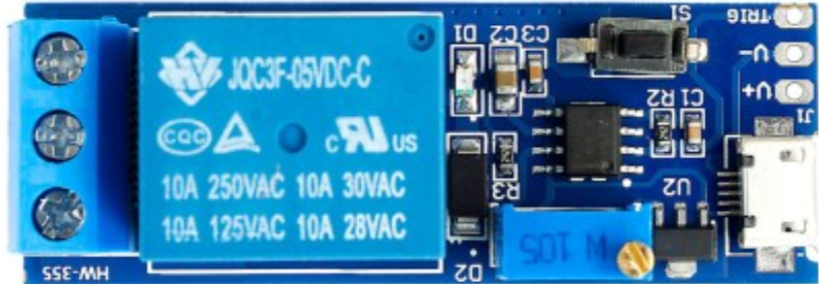
 Design with Relay module 5v-30v in Cirkit Designer
Design with Relay module 5v-30v in Cirkit DesignerIntroduction
A relay module is an electronic device that acts as a switch, which can be controlled by a low-power signal to turn on or off a separate high-power circuit. The 5V-30V relay module is designed to operate within a voltage range of 5 volts to 30 volts, making it versatile for various applications. Common use cases include home automation, industrial controls, and automotive electronics, where it is necessary to control devices like motors, lights, and other high-power loads with a microcontroller or logic signal.
Explore Projects Built with Relay module 5v-30v
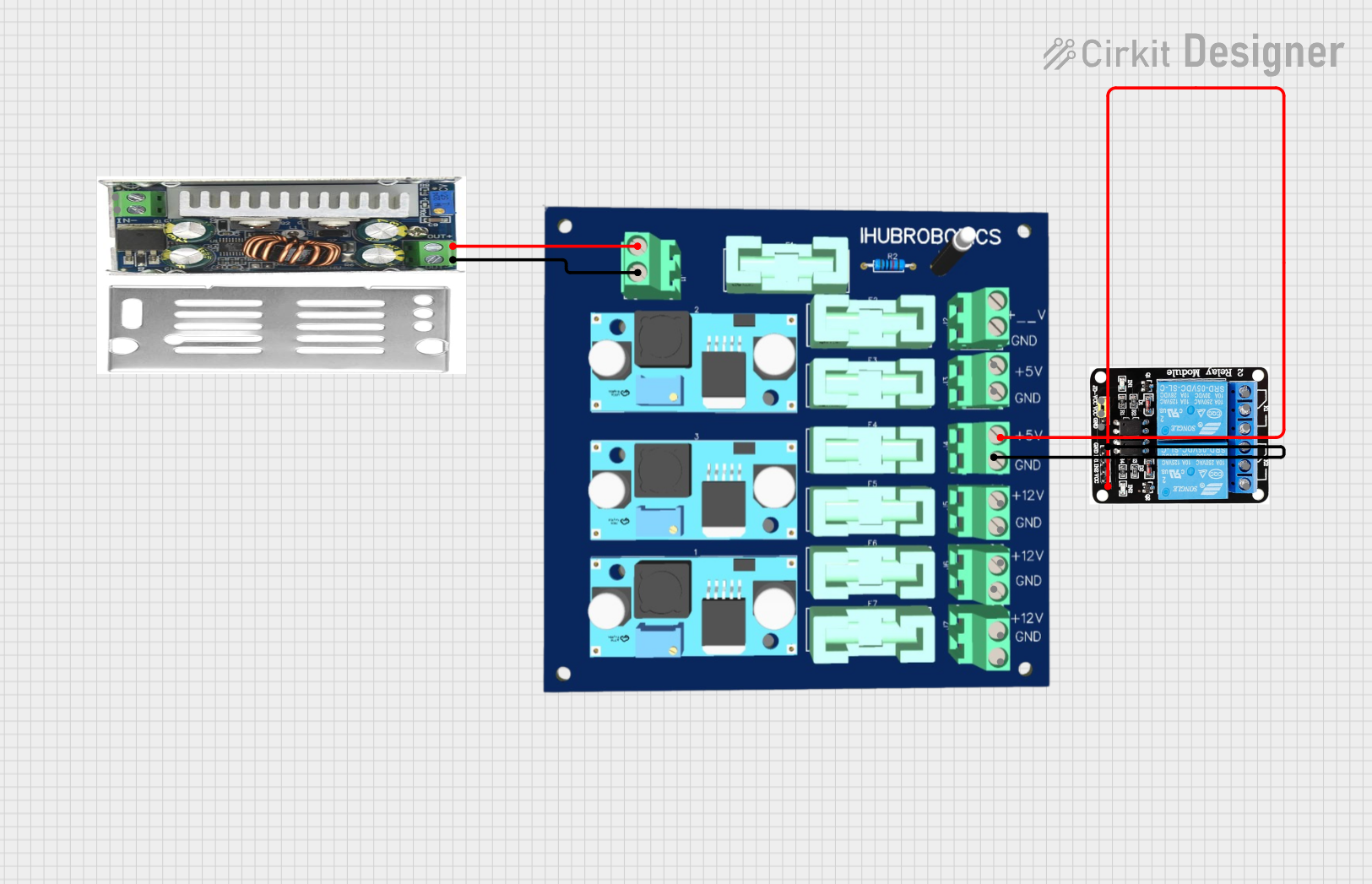
 Open Project in Cirkit Designer
Open Project in Cirkit Designer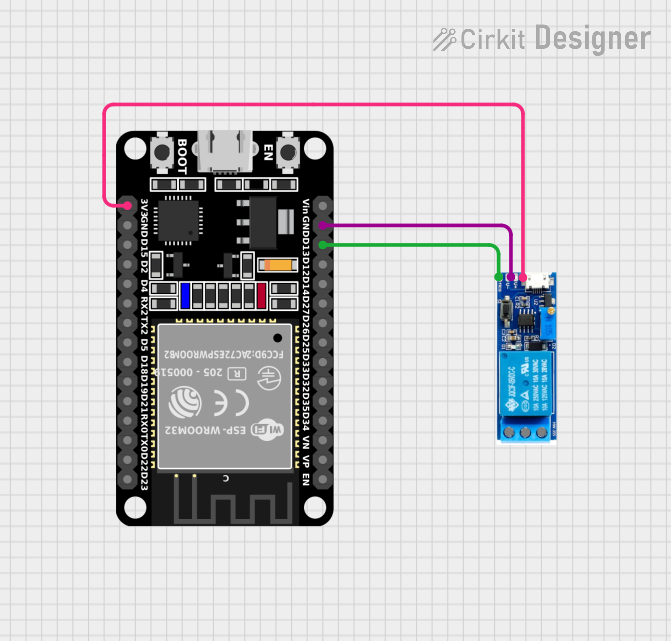
 Open Project in Cirkit Designer
Open Project in Cirkit Designer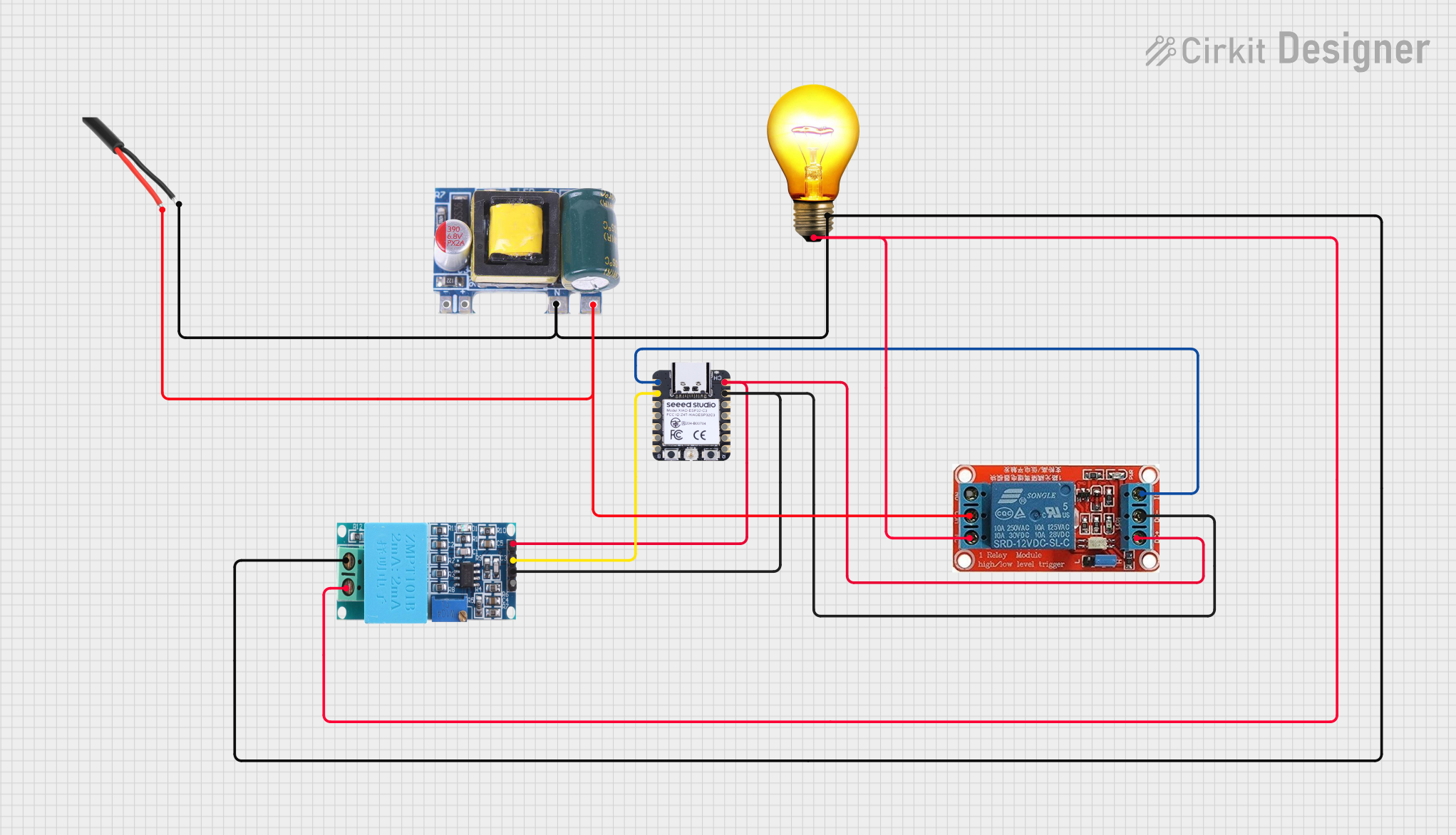
 Open Project in Cirkit Designer
Open Project in Cirkit Designer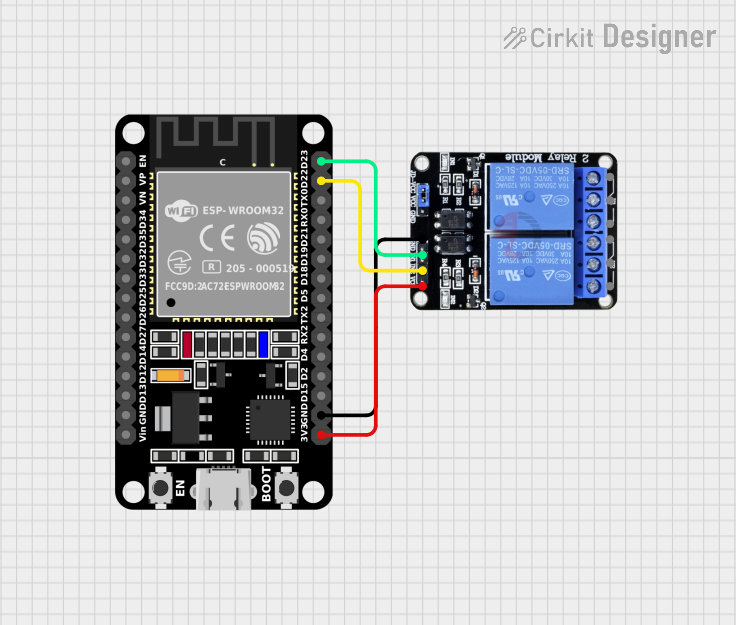
 Open Project in Cirkit Designer
Open Project in Cirkit DesignerExplore Projects Built with Relay module 5v-30v

 Open Project in Cirkit Designer
Open Project in Cirkit Designer
 Open Project in Cirkit Designer
Open Project in Cirkit Designer
 Open Project in Cirkit Designer
Open Project in Cirkit Designer
 Open Project in Cirkit Designer
Open Project in Cirkit DesignerTechnical Specifications
Key Technical Details
- Operating Voltage: 5V to 30V DC
- Control Signal Voltage: Typically 3.3V or 5V (compatible with most microcontrollers like Arduino)
- Maximum Switching Voltage: Up to 250V AC or 30V DC
- Maximum Switching Current: Up to 10A (depending on the relay rating)
- Contact Type: SPDT (Single Pole Double Throw)
- Relay Type: Electromechanical
Pin Configuration and Descriptions
| Pin Name | Description |
|---|---|
| VCC | Connect to the positive supply voltage (5V-30V) |
| GND | Connect to the ground of the power supply |
| IN | Control signal input from microcontroller |
| NO | Normally Open contact, closes when relay is activated |
| COM | Common contact, connect to the circuit you want to control |
| NC | Normally Closed contact, opens when relay is activated |
Usage Instructions
How to Use the Relay Module in a Circuit
- Connect the VCC pin to a positive power supply within the 5V-30V range.
- Connect the GND pin to the ground of the power supply.
- Connect the IN pin to a digital output pin of a microcontroller.
- Connect the device you want to control between the COM pin and either the NO or NC pin, depending on whether you want the device to be on or off when the relay is not powered.
Important Considerations and Best Practices
- Ensure that the power supply voltage does not exceed the specified maximum voltage of the relay module.
- Do not exceed the maximum switching current and voltage ratings to avoid damaging the relay and the controlled device.
- Use a flyback diode across inductive loads to prevent voltage spikes when turning off the relay.
- Consider using a separate power supply for the relay module if the controlled device requires a lot of power.
Example Code for Arduino UNO
// Define the relay control pin
const int relayPin = 7;
void setup() {
// Set the relay control pin as an output
pinMode(relayPin, OUTPUT);
}
void loop() {
// Turn on the relay (connects COM and NO, disconnects NC)
digitalWrite(relayPin, HIGH);
delay(1000); // Wait for 1 second
// Turn off the relay (disconnects COM and NO, connects NC)
digitalWrite(relayPin, LOW);
delay(1000); // Wait for 1 second
}
Troubleshooting and FAQs
Common Issues
- Relay does not switch: Check the control signal and power supply connections. Ensure the control signal has the correct voltage level.
- Intermittent operation: Verify that the power supply is stable and within the specified voltage range.
- Clicking sound but no action: This could indicate a faulty relay or an issue with the load. Check the load does not exceed the relay's ratings.
Solutions and Tips for Troubleshooting
- Always double-check wiring, especially the power supply and control signal connections.
- Test the relay module with a multimeter to ensure it is functioning correctly.
- If using inductive loads, ensure a flyback diode is in place to protect the relay and control circuitry.
FAQs
Q: Can I control this relay module with a 3.3V microcontroller? A: Yes, most 5V relay modules can be triggered with a 3.3V signal, but it's important to check the specific module's datasheet.
Q: Is it safe to switch AC loads with this relay? A: Yes, as long as the AC voltage and current do not exceed the relay's maximum ratings.
Q: How can I increase the number of devices controlled by the relay? A: You can use multiple relay modules or opt for a relay board with multiple channels.
Remember to always follow safety precautions when working with high voltage and current to prevent accidents and equipment damage.